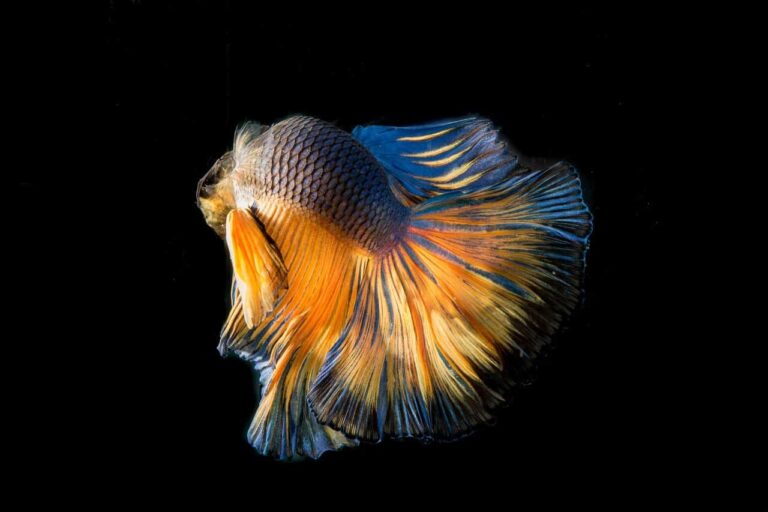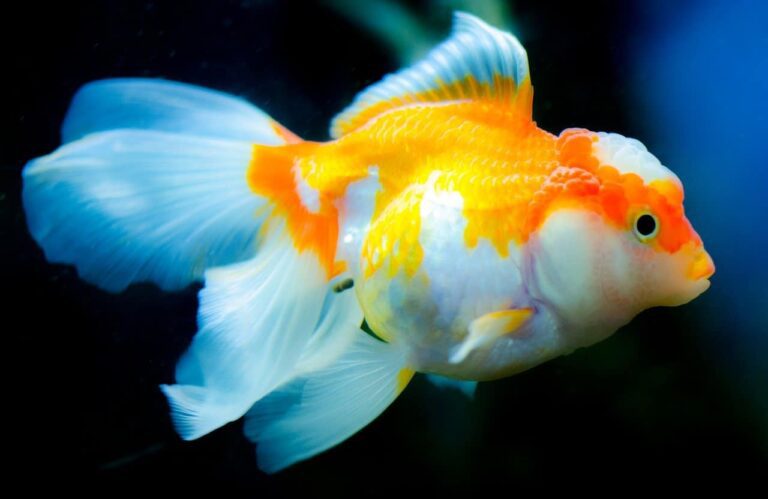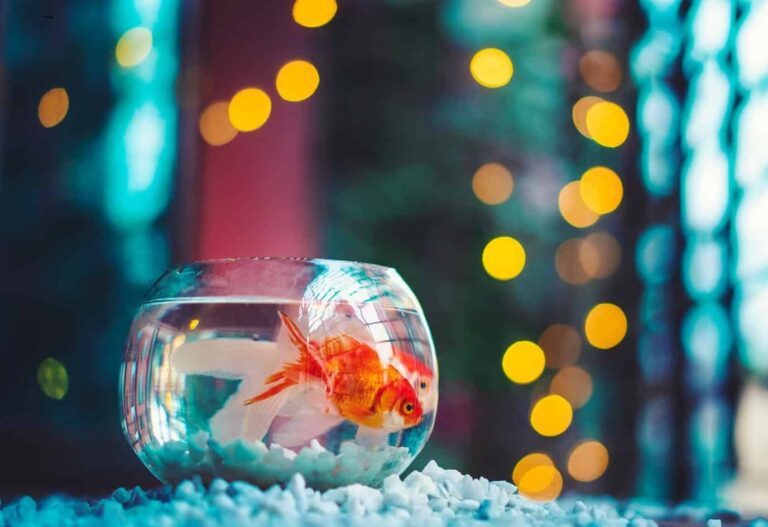Algae generate oxygen in water by converting the harmful elements like the nitrite and carbon-dioxide. They also eliminate many of the toxic fish wastes by converting them into harmless byproducts. Then why should you worry about having the best algae eaters in the aquarium at your home?
Well, the first problem algae creates is hampering the beauty of your fish tank. A little algae looks natural and fine but excess of algae can contaminate the aquarium water. Having the wrong algae type in the aquarium can also affect the health and life of the other plant and fish species in the aquarium.So, what causes the algae bloom?
To thrive three elements are required for algae – water, light and nutrition. In aquarium you can’t do anything about water. But measures can be taken to reduce light hour or avoid direct sunlight and nutrition could be controlled by limit feeding & maintaining minimal bio stocks.
Controlling algae is all about finding out the proper balance point of you aquarium and maintaining it. For new hobbyist this could be difficult. To firefight the situation, algae eaters come to the scene.
The algae eater species for your aquarium are the fish, snails, and shrimps as they consume the target food rather than eating each other. Some forms of the fish may end up eating the snails. But you can identify the snail eating fish and keep them away from the tank. Different algae eaters prefer different types of algae. So choose wisely for your requirement and it is best to keep a combination which can cover most types of algae.
Best Algae Eater Fish
1. Otocinclus Catfish

The Otocinclus Catfish (also called as Dwarf Suckers) grows to a size of 2 inches max. The omnivorous school fish live in communities and are highly peaceful. Their staple foods are algae and other forms of microorganisms.
Best Tank Mates
The best tank mates for the Otocinclus Catfish are the black skirt tetra; dwarf Gourami, jewel tetra, and the related species, rasboras and any type of shrimps.
Aquarium Volume
The minimum tank volume recommended tank volume is 23 gallons. They are free flowing fish which can stay calm and comfortable in the temperature range of 710F and 820F. They love the water ph to be slightly on the acidic side with the ph value between 6.5 and 7.5.
Preferred Food
The Otocinclus Catfish has the highest affinity for soft algae in the aquarium tank, though it can eat up any type of algae. It can reach to any level from the top to the bottom substrate with no hassles. Besides, you need to provide the fish with protein and live feed to keep it healthy and active.
Breeding
The Otocinclus Catfish doesn’t breed easily while in the captivity of the aquarium. It happens rarely when they are in large groups. But it may not be possible for you have large numbers in the limited tank space.
2. American Flag Fish
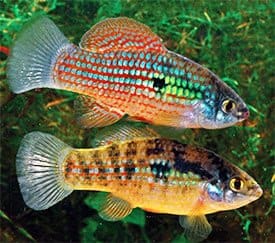
The American flag fish can grow to a size of 2 inches in size. It is a school fish which loves to remain within its own community. It is a native kill fish with plenty of colorful physical features. The staple food for this fish is the algae, worms and water borne insects.
Best Tank Mates
The best tank mates for this fish could be the Endlers, cherry barbs, dwarf Gouramis and the galaxy rasboras. The American flag fish is highly territorial in its approach. They may become aggressive with the other smaller species while being together in the tank. Hence, you should take care while grouping them with the others.
Aquarium Volume
The minimum recommended aquarium volume is 30 gallons of water if you wish to keep them away from each other and the rest of the fish in the tank. They have high resistance to temperature variations in the aquarium tank between 670F and 870F.
Preferred Food
The American Flag fish have high affinity for eating almost all the forms of algae. They won’t disturb the other species of fish on the higher layers of the aquarium. It is due to their characteristic to remain in the center and the bottom layers of the aquarium.
Breeding
The breeding volume of the American flag fish is stated to be very low among the fish species. Hence, the probability of their population overgrowth is very less.
3. Twig Catfish
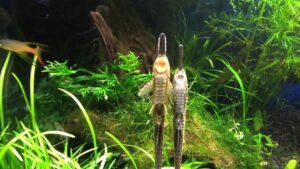
The Twig Catfish can grow to a size of 6 inches. They have a brown body similar to a twig with stripes from head to the tail.
Best Tank Mates
The best tank mates for the twig catfish are the tetra barbs, Otocinclus Catfish, Gourami, etc. It is because of their peaceful characteristics.
Aquarium Volume
The recommended aquarium volume for the Twig Catfish is 20 gallons. Preferred water temperature is between 720F and 800F. The ph value should be between 6.5 and 7.8.
Preferred Food
The Twig Catfish prefers to consume large quantities of blue green algae, brown slime algae, red algae and the black algae. It is a scavenger which survives on leftover fish foods, plant wastes and the other micro organisms.
Breeding
They breed on algae covered rocks and stones within the aquarium. Their breeding cycle is much more active than the other species you have read so far in this article. So, you should be careful while pairing when you wish to control their population.
4. Bristlenose Plecos

The Bristlenose Plecos can grow to a size of 4 to 6 inches. The fish has a colorful physical appearance with the feather like tail and fins.
Best Tank Mates
The Bristlenose Plecos can live with any type of non-aggressive and peaceful fish without any hassles. .
Aquarium Volume
The minimum recommended tank volume for the Bristlenose Plecos 40 gallons. The preferred water temperature should be between 600F and 700F. The preferred ph value of the water should be between 5.5 and 7.6.
Preferred Food
The Bristlenose Plecos can eat up any kind of algae, though it prefers the green spot algae. The others are the Diatoms, red algae and the brown algae.
Breeding
The Bristlenose Plecos breeds when it is in pairs and groups. The preference ratio is 1:1 or 1:2 for male to female.
5. Golden Nugget Pleco
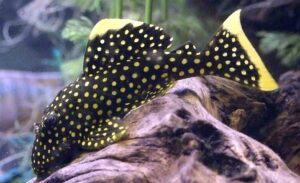
The Golden Nugget Pleco is a school fish which likes to stay within its own community most of the times, rather than being alone. It can grow to size of 12 inches. Since they are highly sensitive to stress, you need to take maximum care to protect them.
Best Tank Mates
The Golden Nugget Pleco can live comfortably with the Cory, tetras, and the other fish that live near the top layer of the tank.
Aquarium Volume
The minimum recommended tank volume is 55 gallons. The water temperature should be between 750F and 800F. The water ph should be between 6.6 and 7.5. Creating natural aquascaping with rocks and caves will be helpful for the comfortable living of the Golden Nugget Pleco.
Preferred Food
The Golden Nugget Pleco can eat any kind of algae that grow on the substrate level of the aquarium tank, wood, plants, and rocks. In addition it prefers live feeds, flakes, and shrimp.
Breeding
The Golden Nugget Pleco has a moderate breeding rate which is similar to the other Pleco family members. The pairing is preferably 1:1 if you wish to have good breeding.
6. Siamese Algae Eater
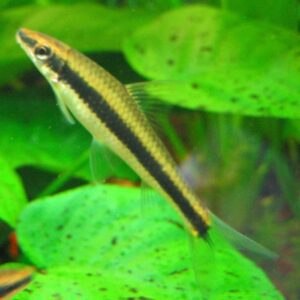
The Siamese algae eater is a scavenger type of fish, which can eat large volume of any algae type. It can grow to a size of 2 inches. It I stated to be highly territorial in nature and require large free space around it in the aquarium tank. So, the best way is to have only small numbers if the tank size is small or moderate.
Best Tank Mates
The best tank mates for the Siamese algae eater include tetras, barbs, Corydora, and the other peaceful fish. The Siamese algae eater doesn’t show aggressive behavior, unless its territory is encroached.
Aquarium Volume
The Siamese algae eater can live in a small tank of 10 gallons also. But then you have to make sure there are not more than 5 to 6 of them in numbers.
Preferred Food
The Siamese algae eater can eat up any kind of algae on substrate, wood, rock, and the other parts of the aquarium. The other probable food sources could be the leftover other fish foods, flakes, live feed and the algae pellets.
Breeding
The breeding patterns of the Siamese algae eater are still unknown due to its territorial obsession. But the studies show you can have 1:1 male to female pairing.
7. Fancy Guppy

The fancy Guppy is a community fish which can grow to a size of 1.4 inches. They have a vast range color and skin types like the snake-skin which is highly translucent.
Best Tank Mates
Angel fish, feeder fish, apple snail, and the ghost shrimp are some of the best tank mates of the fancy Guppy.
Aquarium Volume
The minimum recommended aquarium tank volume is 40 to 50 gallons or more. The preferred water temperature should be between 700F and 800F. The water ph should be around 7.8.
Preferred Food
The Fancy Guppy fish has the high affinity towards the blue green, brown, and the red algae, though it tends to eat the other types of algae also. In addition to algae you must feed it with flakes, live feed, and pellets of proteins and vitamins.
Breeding
The Fancy Guppy has a normal breeding rate with the 1:1 or 1:2 male to female ratio.
Best Algae Eater Snails
8. Rabbit snail

The rabbit snail can grow to a size of almost 5 inches. The snail’s body is made of twin colors, namely dark brown shell and yellow head. The head remains hidden in the shell mostly, until it wants to move.
Best Tank Mates
The Amano Shrimp, Cory Catfish, and Otocinclus Catfish are some of the suggested tank mates for the Rabbit snail.
Aquarium Volume
The approximate recommended volume of the tank is 25 gallons, though it can survive in narrower tanks also. The soft water ph value should be between 7.5 and 8.5. The preferred water temperature is between 760F and 840.F.
Preferred Food
The rabbit snail has affinity for eating all types of fresh water algae, with special preference to the green and soft algae. It can also eat up the remnant fish foods, and the Java Ferns plants.
Breeding
The rabbit snail is very slow to breed when you have a male and female species. The breeding is stated to happen once in a year or more.
9. Mystery Apple Snail

The mystery apple snail is a bottom substrate water species which can grow to a size of 5.9 inches in the diameter. The color of the species varies from brown to yellow, combined, and plenty of others. Practically there is no limit to the color and the patterns.
Best Tank Mates
The best tank mates for the Mystery Apple Snail are the rabbit snail, Fancy Guppy, and the other fish which do not eat or harm it.
Aquarium Volume
The Mystery Apple snail can live within the tank space of 20 gallons to 30 gallons or more. The soft water ph value should be between 7.2 and 8.6. The preferred water temperature is between 760F and 840.F.
Preferred Food
The mystery apple snail can eat any type of algae, though it shows special affinity for the plant and substrate types. It also feeds on the bottom substrate vegetation. Hence, you should be careful while choosing the aquarium plants.
Breeding
The mystery apple snail has a very slow breeding rate with its 1:1 male to female pairing, which may take up to one year or more.
Best Algae Eater Shrimps
10. Amano Shrimp
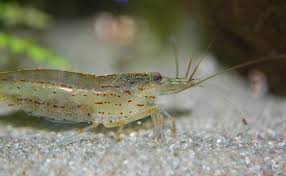
The Amano shrimp can grow to a size of 1.5 inches under favorable freshwater conditions. It is native to Japan and it shows a tendency to climb up the plants and rocks in the tank. Hence, you should keep the tank always covered.
Best Tank Mates
The best tank mates for the Amano shrimp can be passive fish that do not eat up the shrimp. For example, you can include the fancy guppy, rabbit snail, Siamese algae eater, etc.
Aquarium Volume
The Amano shrimp can live easily within a 10 gallon tank without any hassles. The preferred water temperature is between 680F and 780.F. The preferred water ph is between 6 and 8.
Preferred Food
The Amano shrimp eats all kinds of tank algae, including the green, blue green, brown, and red. It shows special affinity for the hair algae. The algae eating affinity of the shrimp can be often very high. Hence, you should ensure the feeding of the Amano shrimp with the algae pellets. Besides, it can eat up the plants species within the tank. Avoid any kind of artificial fertilizers or chemicals for the plants in the tanks. It is better to choose the plant species that can survive on mineral supplements which do not pollute the water too much.
Breeding
The Amino shrimp has a standard breeding rate at the 1:1 male to female pairing ratio.
11. Orange Shrimp
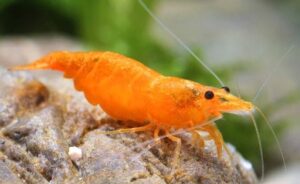
The orange shrimp is a Taiwanese origin species attractive skin colors. The water quality for the shrimp should be the highest with regular filtering and cleaning. Make sure the temperature, ph, and the other quality parameters remain constant. Any fluctuations can cause physical damages to the shrimp and kill it.
Best Tank Mates
The passive mates like the mystery apple snail, rabbit snail, fancy guppy, and the fish species that do not eat up the shrimp are recommended for the Orange shrimp.
Aquarium Volume
The orange shrimp can live in an aquarium of 20 to 30 gallons. The preferred water temperature should be between 650F and 850.F. The preferred water ph is between 6.2 and 7.8.
Preferred Food
The orange shrimp needs a lot of regular algae feeds at regular intervals. It has a tendency to eat up all sorts of algae that grow in the aquarium tanks. It has special affinity towards blue green, green, and the brown algae. The other favorite food for the orange shrimp is the thin bio-film that grows on the underwater surfaces. Apart from these two foods, you may also have to feed the algae pellets, proteins and vitamins.
Breeding
The average days for the orange shrimp breeding are 30. They can breed at a faster rate when paired up properly. Hence, you should take care of controlling the population within the manageable limits by applying suitable measures.
12. Cherry Shrimp

The Cherry shrimp can grow to a size of 1.5 inches or more. It has the ability to reach the narrowest places in your aquarium tank, where it is not possible to reach your hands or tools without causing any damages. The shrimp prefers to live in natural type of aquascaping.
Best Tank Mates
Any harmless fish and snail species can be the tank mate for the cherry shrimp. The other recommended species are from its class of shrimps. It can form long colonies within a short span of time.
Aquarium Volume
The recommended volume of the tank is from 10 to 25 gallons. The preferred water temperature should be between 680F and 780.F. The preferred water ph is between 6 and 8.
Preferred Food
The cherry shrimp can eat every type of algae that grows on the substrate, wood, and the rocks in the aquarium tank. It is also a scavenger among the shrimp communities. It can clean up leftover fish foods, pellets, flakes, and other foods. The cherry shrimp has a high affinity for the foods, especially when it is in groups or colonies. Hence, you should ensure the proper feeding of the shrimp on time.
Breeding
The cherry shrimp has a high breeding rate of 30 to 35 days. The population can grow rapidly unless proper control measures are taken.
13. Bamboo Shrimp
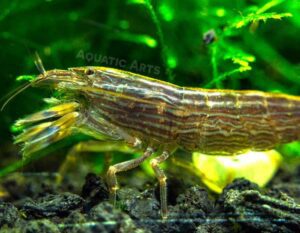
The Bamboo shrimp can grow to a size of 3 inches. It is a natural climber of plants, rocks and the stones within the tank. So, you have to be very careful in keeping the tank lid sealed.
Best Tank Mates
The bamboo shrimp can live with the orange shrimp, cherry shrimp, green snail, fancy fish, and the medium sized tropical fish which don’t eat up or attack the shrimp.
Aquarium Volume
The bamboo shrimp requires a minimum of 20 gallons water in the tank with dense plantations, rocks and caves. The preferred water temperature should be between 680F and 780.F. The preferred water ph is between 6.5 and 7.5.
Preferred Food
The bamboo shrimp can eat any type of algae that grow on the underwater woods, rocks and stones, and the bottom substrate. Besides, they can also eat up the vegetation that grows on the bottom substrate of the tank.
Breeding
The bamboo shrimp has a high rate of breeding alike the other shrimp species which you came across so far in the article.
14. Indian Zebra Shrimp

The Indian zebra shrimp has the strips on its back just similar to a zebra! The species can grow to a size of 1.4 inches. It has a typical antenna on its nasal area which increases the sensing ability of the shrimp.
Best Tank Mates
The best recommended tank mates for the Indian zebra shrimp are the passive tropical fish which are peaceful and don’t harm the shrimp or eat it up. It can also live in harmony with the other shrimps of the other classes and the snails.
Aquarium Volume
The Indian Zebra shrimp requires a minimum tank volume of 20 gallons to 30 gallons. The preferred water temperature should be between 600F and 780.F. The preferred water ph is between 6.8 and 7.5.
Preferred Food
The Indian zebra has the tendency to eat up all the types of algae that are common for the fresh water tanks. The shrimp has special affinity for the soft green and golden brown algae that grows on the underwater conditions of the Indian rivers and lakes.
Breeding
The breeding cycle of the Indian Zebra shrimp is stated to be very fast. You can breed the shrimp under the specified water conditions very easily.
15. Tiger Shrimp
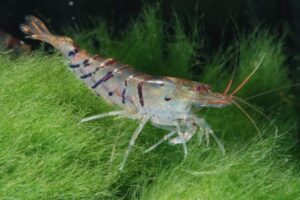
The Tiger Shrimp is stated to be a born algae eater right from its earliest stages. The wild shrimp has a tendency to grow to an astonishing size of 13 inches.
Best Tank Mates
The tiger shrimp can survive with any kind of tropical fish, shrimp, and the snails for which the tiger shrimp is not a food /prey.
Aquarium Volume
The large tiger shrimp requires a minimum tank space of 50 to 60 gallons or more. The preferred water temperature should be between 650F and 750.F. The preferred water ph is between 6.0 and 7.25.
Preferred Food
The tiger shrimp can eat up every species of algae that grow in the fresh water aquarium tanks. In addition, it needs large quantity of algae pellets, and vegetation feeding.
Breeding
The average breeding time of the tiger shrimp is 30 days. It can breed faster when the water conditions are within the preferable values as stated above.
Passing Thoughts
You can choose any of the 15 algae eaters you have read in this article. Plan your tank size, plant species, aquascaping design, and the algae eaters before you get the tank designed and built. Also don’t forget to get a good filtration system in your tank. You need to keep in mind that algae eaters are not the solutions for algae issues in your tank. You need to identify the underlying root cause to eliminate the issue completely. Meanwhile enjoy the benefits of hygienic tank cleaning with the best algae eaters.


